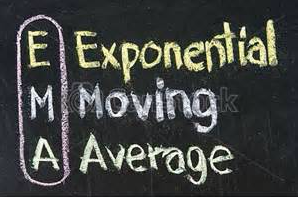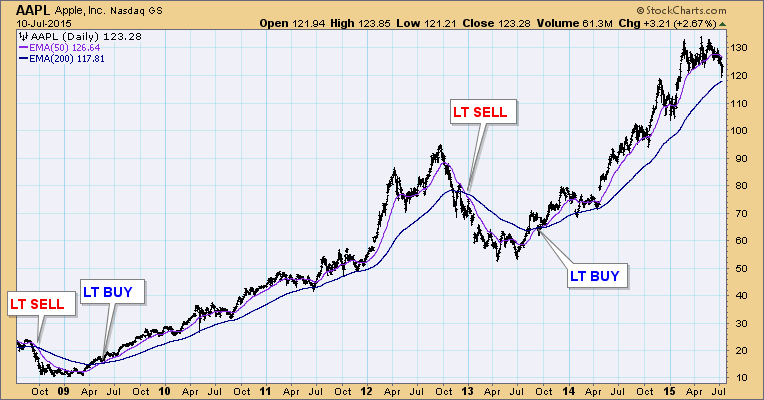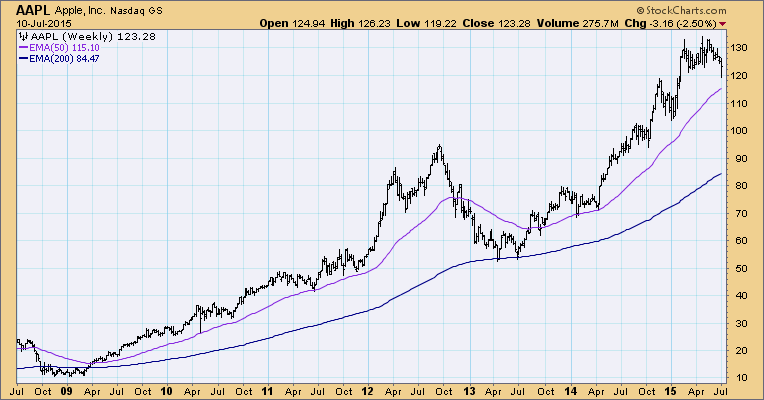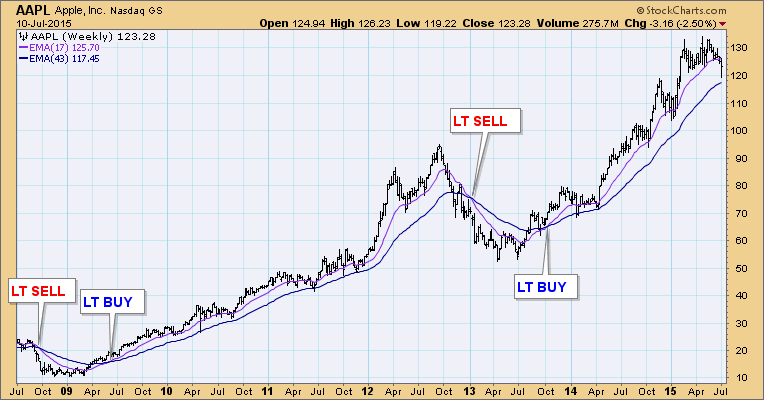
 QUESTION: In the StockCharts DecisionPoint documentation, it says that the weekly (17EMA and 43EMA) and monthly charts (6EMA and 10EMA) can be used to show long-term trends, but in the webinar, Erin said that they use only the daily chart.
QUESTION: In the StockCharts DecisionPoint documentation, it says that the weekly (17EMA and 43EMA) and monthly charts (6EMA and 10EMA) can be used to show long-term trends, but in the webinar, Erin said that they use only the daily chart.
CARL'S ANSWER: While the best way to determine the trend is to put some eyeballs onto the chart, that is still a subjective judgement and can sometimes be open to interpretation. For a more objective method, moving averages can be used in different ways to determine the trend of a price index. The simplest interpretation would be to identify the trend based upon the direction of the moving average--rising, falling, or flat. Erin and I use the slightly more sophisticated method letting moving average crossovers define the trend. On a daily chart we allow the relationship of the 50EMA and the 200EMA to define the long-term trend. If the 50EMA is above the 200EMA, the long-term trend is up (bullish), and the long-term trend is down (bearish) if the 50EMA is below the 200EMA. As with any indicator, it isn't foolproof, but I think it is an excellent way to define the trend quickly and objectively. The chart below shows how it works.
As you can see it takes quite a long time for the signals to change, so these crossovers are not what you'd call ideal for timing entry and exit actions, but they do provide useful information about the long-term trend.
Theoretically, the same EMAs we use on the daily chart (50 and 200) should work on the weekly chart, but obviously that is not the case, as we can see below.
In order to address this problem I attempted to choose weekly EMAs that would approximate the relationship of the 50EMA and 200EMA on a daily chart. I found that the 17EMA and 43EMA did the job pretty well.
Attempting the same thing on the monthly chart, I decided on the 6EMA and 10EMA.
To answer the original question, we prefer to use the 50EMA and 200EMA crossovers on the daily chart because we will usually be alerted to long-term trend changes on the "day of" the event. Weekly and monthly EMA crossovers will not be official until the end of each of those periods, and the weekly/monthly crossovers may not exactly coincide with the 50EMA/200EMA crossovers on the daily chart. The disadvantage of using the daily chart is that it is more vulnerable to whipsaw signals, whereas the weekly and monthly crossovers require more patience and discipline.
I put some thought into which EMAs we would use in various time frames, but there is nothing magic about them. There is no reason that you couldn't settle upon a different set of EMAs that better suits your trading/investing style.
Subscribe to Carl's free blog and receive email whenever a new article is posted. See subscription links at the upper right corner of this page.
Technical analysis is a windsock, not a crystal ball.




